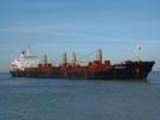Today.Az » Business » Iran woos Central Asians as oil export route
08 October 2006 [22:39] - Today.Az
Iran made a pitch to become a strategic export route for Central Asia's oil, even as Tehran faces mounting pressure from the West to abandon its nuclear ambitions.

A senior oil ministry official said Iran could more than double the volumes of crude oil it receives under "swap" deals, putting the imported oil through its northern oil refineries and exporting an equivalent amount from its southern ports. "We can currently handle 200,000 barrels per day of Caspian and Central Asian crude oil -- and with minimal cost we can raise that figure to 500,000 barrels per day," Mahmood Khaghani, head of Caspian Sea affairs at the ministry, told a conference. Iran, which offers the shortest direct route for Central Asian oil and gas to international markets, has long sought to woo the energy-rich states that became independent after the collapse of the Soviet Union in 1991. So far it has had limited success. Iran is internationally isolated and could face sanctions over what the West believes is its goal of building a nuclear bomb. But with offshore oil production in the Kazakh sector of the Caspian Sea set to soar from 3 million tons to nearly 90 million tons within a decade, Iran has never quite been ruled out as an export option. "History has proved that economics shall prevail and politics shall fail," Khaghani told reporters on the fringes of the Kazakhstan International Oil and Gas Exhibition (KIOGE) in Almaty. Kazakhstan, seeking to diversify away from its dependence on Russia as an export route, is prioritising sending oil exports across the Caspian Sea to the BP-led Baku-Tbilisi-Ceyhan (BTC) pipeline, which has just entered service. France's Total is leading the $4 billion Kazakhstan Caspian Transportation System (KCTS), which envisages pumping oil from the giant Kashagan field to the Kazakh port of Kuryk, then shipping it westward across the Caspian Sea to Baku. "We hope that we will soon reach a commercial agreement on the business structure of this project," Kairgeldy Kabyldin, managing director of transport and service at state oil firm KazMunaiGas, told the conference. Kabyldin also highlighted expanding the Caspian Pipeline Consortium, which pumps oil from the Chevron-led CVX.N. TengizChevroil field, and expanding a new eastward pipeline to China as priorities of Kazakhstan's oil export policy. But Iranian officials reckon the Central Asians will -- at the latest by the middle of the next decade -- need a major southern export route. Mohammad Souri, managing director of the National Iranian Tanker Company (NITC), told the conference that Iran was buying six new, larger, tankers to ply the Caspian and would boost the capacity of its Neka oil port. Souri said Iran wanted to increase imports of Central Asian crude to 370,000 barrels per day, which it would put through its Tehran and Tabriz oil refineries. At a later stage, volumes could be increased to 500,000 bpd, he added. Souri estimated transport costs at $6 per ton using the larger tankers -- with a capacity of 63,000 tons -- or around one-fifth of other export routes. Oil executives played down Iran's chances of becoming a key export route for Caspian crude soon, noting that in today's climate their U.S. partners could never back such an option.
"For them it would be impossible," Philippe Rochoux, managing director at Total E&P Kazakhstan, told Reuters. In addition to its role in KCTS, Total is involved in a study into the proposed Kazakhstan-Turkmenistan-Iran Oil Pipeline (KTIOP), which would run down the east Caspian coast. "It's not a project that we are seriously considering," said Rochoux. Reuters /www.iranoilgas.com/
|